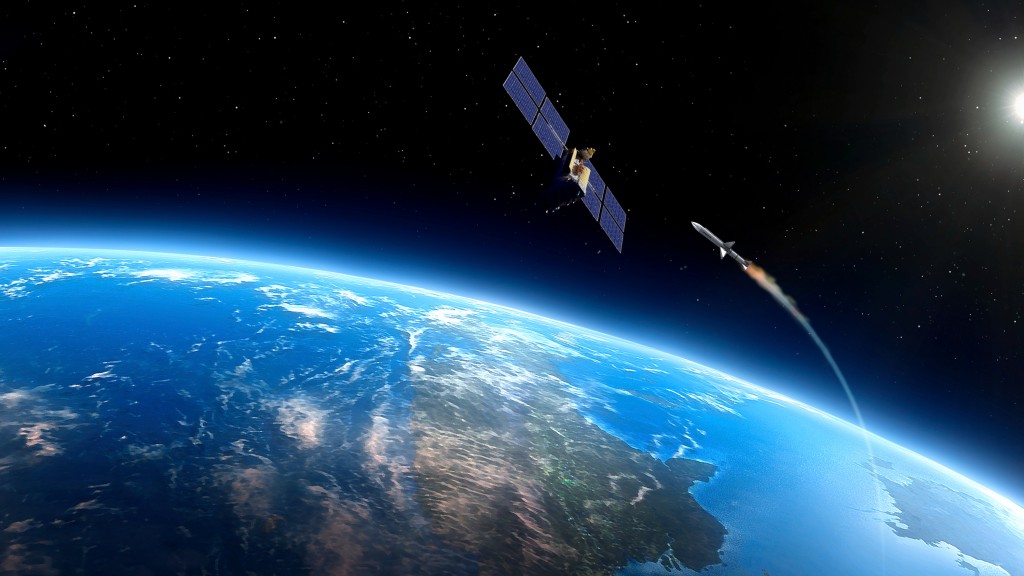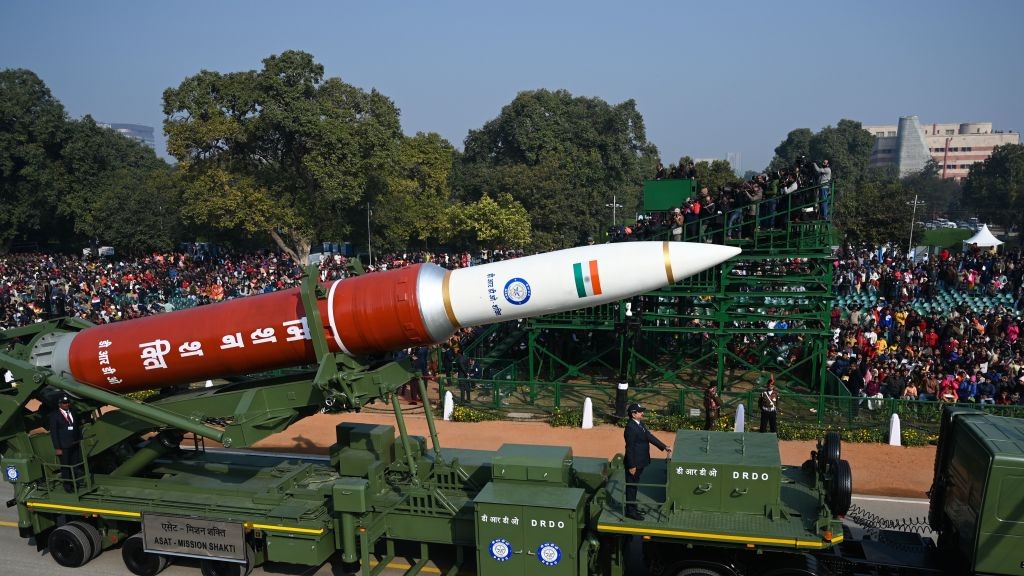Anti-satellite weapons: History, types and purpose
Powerful anti-satellite weapons have been developed by rival nations to knock out each other's satellites as the battle for space heats up.

Orbiting high above our heads is a technology that has changed every aspect of our lives.
From the GPS on your phone to the sport you watch on TV, satellites have become a cornerstone of modern life.
But as well as civilian use, they're also the lynchpin to secure military and government communications. So it stands to reason then that any hostile state wishing to cause disruption would target these satellites. Known as anti-satellite (ASATs) weapons, they have been around almost as long as satellites themselves.
History of ASATs
When the Soviet Union launched the world's first satellite Sputnik 1 in 1957, the US feared their cold war rivals would develop an orbital network of nuclear-armed satellites. It responded with its first ASAT, an air-launched ballistic missile called Bold Orion.
The Soviets responded with their own ASAT. These were known as co-orbitals which would essentially fly alongside satellites and blow themselves up, taking the satellite with it.
The tech has continued to evolve, with China entering the race in 2007 when it destroyed an old weather satellite with a ballistic missile. Continuing tests have led to a dangerous rise in space junk orbiting the Earth, and in April 2022 the US became the first county to announce it was banning the use of missiles against satellites, according to the White House website.
Types of ASATs
ASATs can be broadly divided into two types, those that use brute force and those that don't. Kinetic energy ASATs physically crash into satellites and can be virtually anything that can reach altitude, from ballistic missiles to drones and other satellites.
A different type of ASAT is the non-kinetic type. They use non-physical attacks such as cyber-attacks, jamming and even blind satellites with lasers. These attacks can all be carried out from the air, low orbit, or even ground installations.
Creating space junk
Imagine what happens when satellites are destroyed and turn into junk orbiting the Earth. Then picture what happens when that junk crashes into other space vehicles and they too turn into junk.
This nightmare scenario was played out in the 2013 blockbuster movie "Gravity" and pretty much sums up the Kessler Syndrome.
The Kessler Syndrome is what happens when the amount of space debris in orbit reaches a point where it just creates more and more, which can cause havoc for any space program.
It is named after former NASA scientist Donald Kessler, who described the basic idea in his 1978 paper "Collision Frequency of Artificial Satellites: The Creation of a Debris Belt". He and co-author Burton Cour-Palais said the likelihood of satellite collisions would increase as more and more spacecraft were launched.
Projects such as the European Space Agency's Clean Space initiative are trying to tackle the problem through things such as the robotic salvage of derelict satellites.

A new peace?
Four countries — the USA, China, Russia and India — have destroyed their own satellites in ASAT tests. But just as the Soviets and USA once sat down to talk about nuclear disarmament, there is a growing movement toward getting rid of ASATs too.
The United States' plan to ban tests on the use of ballistic missiles against satellites was set into motion after the Russian government shot down one of its own satellites and created thousands of pieces of debris orbiting Earth. It left astronauts on the International Space Station needing to take shelter as the shrapnel field passed by.
Additional resources
You can read more about anti-satellite weapons and the emerging space arms race by reading this article from Harvard International Review magazine. Alternatively, you can find out about Russia's anti-satellite test at the Arms Control Association website.
Bibliography
"NASA Administrator Statement on Russian ASAT Test". NASA Space Station (2021).
"FACT SHEET: Vice President Harris Advances National Security Norms in Space". White House (2022).
"What is cyberwarfare?". Live Science (2022).
"Earth's Space Debris Problem Is Getting Worse, And There's an Explosive Component". Science Alert (2020).
Kessler,D. Cour-Palais, B. "Collision frequency of artificial satellites: The creation of a debris belt". JGR Space Physics (1978).
"Clean Space". European Space Agency: Space Safety (2012).
Join our Space Forums to keep talking space on the latest missions, night sky and more! And if you have a news tip, correction or comment, let us know at: community@space.com.
Get the Space.com Newsletter
Breaking space news, the latest updates on rocket launches, skywatching events and more!

Mark Smith is a freelance journalist and writer in Liverpool, England. A graduate in Information Systems, he has written on business, technology and world affairs for organizations ranging from the BBC, The Guardian, The Telegraph and How It Works Magazine, as well as magazines and websites in the United States, Europe and South East Asia. Subjects of his writing have ranged from quantum computing to the VFX of Tron. He is the author of "The Entrepreneur's Guide to the Art of War," which Booklist called "Essential reading for the business leaders of tomorrow and a fascinating study of the boardroom as the new battlefield."










